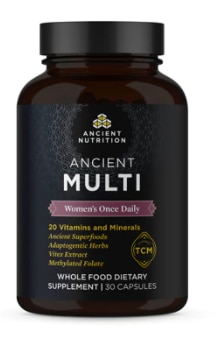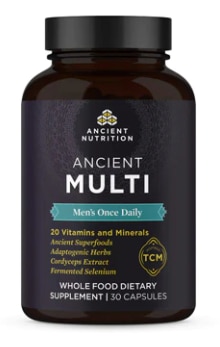If you’re experiencing trouble sleeping, leg cramps, muscle pain and anxiety, you may be deficient in one of the most important minerals in the body – magnesium. It’s an essential mineral and an electrolyte, which means that it plays a role in many cellular functions in the body, including metabolism, neurotransmitter function and energy production.
Magnesium deficiency is not uncommon; in fact, it’s estimated that 80 percent of adults may not be getting enough of this vital nutrient. How do you know if you’re getting enough? There are things to look out for when you’re experiencing a deficiency and thankfully, it’s easily corrected in most cases.
Symptoms Magnesium Deficiency
There are some tell-tale signs of low magnesium levels, including some common health complaints that are often overlooked and considered the result of another problem.
Here are some signs that you’re not getting enough magnesium:
You’re prone to leg cramps.
Magnesium plays a role in neuromuscular signaling and muscle contraction, so a deficiency in the mineral can cause (sometimes very painful) leg cramps. If you experience cramping or restless leg syndrome, you may need to increase your magnesium and potassium levels.
You’re feeling restless.
Having trouble settling in at night and falling asleep? Low magnesium can cause restlessness, hyperactivity and trouble sleeping. Magnesium affects the GABA cycle in the body, which promotes calmness when functioning properly and anxiety when it’s not.
You have muscle pain.
Magnesium supports the proper function of nerves, muscles and tissue, so a deficiency can lead to lingering muscle pain.
Increased blood pressure.
Together with calcium, magnesium supports healthy heartbeat rhythms and healthy blood pressure.
Your bones are weakening.
About half of the magnesium in the body is present in our bones. When levels become too low, there’s an increased risk of weakened bones and osteoporosis.
You’re getting migraines.
Magnesium helps to balance neurotransmitters in the body, so getting migraine headaches may be linked to a deficiency.
Who is at risk for magnesium deficiency?
Some people are at a greater risk of magnesium deficiency than others. You can inherit an inability to properly absorb the mineral, which may require the use of supplements to sustain healthy levels. People who have a diet low in magnesium foods, those with gastrointestinal issues, people with type 2 diabetes and older adults are also at a greater risk of having low magnesium levels.
How to increase magnesium levels
Eating a healthy diet that includes a variety of whole foods is the best way to get enough magnesium. Some of the best magnesium-rich foods include:
- Spinach
- Swiss chard
- Black beans
- Almonds
- Cashews
- Avocado
- Pumpkin seeds
- Banana
- Broccoli
- Buckwheat
- Yogurt
- Quinoa
- Flaxseeds
- Dark chocolate
- Spirulina
Popular magnesium supplements
If you suspect that your magnesium levels are low, you can obtain more from supplements, which are available in a variety of forms. It may be hard to keep track of the many forms of magnesium supplements on the market today. The absorption rate and bioavailability will differ depending on the form, which can impact its effectiveness.
The most popular types of magnesium supplements include:
Magnesium chelate: This is thought to be the most absorbable form of magnesium and it’s used to help support calmness and muscle relief.†
Magnesium citrate: This is a combination of magnesium and citric acid, which is used for its laxative, digestion-supporting effects.†
Magnesium glycinate: This form of magnesium is chelated and has a high absorption rate and bioavailability, so it’s preferred for people who are trying to correct a deficiency.†
Magnesium threonate: This is a newer, emerging type of magnesium that’s getting attention for its absorption. It’s not yet available in every health food or supplement store.†
Magnesium chloride oil: This is an oil form that’s used topically on people who have trouble absorbing magnesium.†
When it comes to correcting low magnesium and maintaining healthy levels, everyone’s dosing needs are different. Generally, women ages 31 and older need about 320 milligrams of the mineral daily, while men the same age need about 420 milligrams. Be sure to talk to your healthcare provider about what is right for you.
†These statements have not been approved by the Food and Drug Administration. These products are not intended to diagnose, treat, cure or prevent disease.



